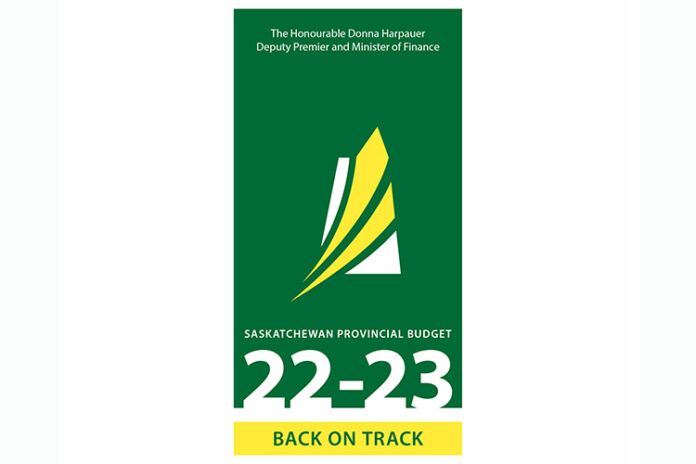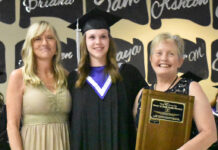Saskatchewan taxpayers will be shouldering an expansion to the PST later this year while also experiencing a growing provincial deficit after the tabling of today’s 2022-23 provincial budget.
Minister of Finance Donna Harpauer presented the 2022-23 provincial budget in the legislature on Wednesday afternoon, a document which includes record investment in the areas of healthcare and education, but also tacks on an additional $462.9 million onto the provincial deficit which now grows to a forecast $30 billion.
Healthcare spending has grown to a record $6.8 billion, an increase of $288.2 million from the previous year.
This spending includes a funding increase of $21.6 million to address surgical backlogs in Saskatchewan. This year’s funding is part of a three year plan to reduce the waitlist with the province aiming to return to pre-COVID surgical wait times by the end of March 2025.
Other health spending highlights include:
- The Saskatchewan Health Authority is receiving a record $4.2 billion.
- increased spending to address recruitment and retention of physicians, hiring and training more nurses, hiring more paramedics.
- spending $470 million in mental health and addictions programs and services. This increased funding will fund initiatives that deliver effective counselling and treatments, and introduce further proactive prevention measures.
- $6.5 million in funding for an additional 117 continuing care aid positions. This takes another step towards a government commitment to hire 300 CCAs in long-term care and expanded home care services. There was funding for 108 CCAs approved last year, and in 2023 the province will fund the final 75 positions.
- spending $1.5 million to bring in 300 healthcare workers from the Philippines.
- $3.5 million for physician recruitment and retention initiatives in rural areas of the province, with a target on family physicians in rural locations.
- Funding 11 new intensive care beds at a cost of $12.5 million. That adds to the current 79 ICU beds in the province. The government wants to add another 20 ICU beds by 2024-25.
- To enhance Emergency Medical Services in rural and remote areas, a $10.8 million increase in this budget will fund new paramedic positions for ambulance services, Community Para-medicine and the Medical First Responder Program.
- Saskatchewan’s education spending includes a $4.9 million increase to add another 150 seats for nurse training in the province.
Harpauer explained that making important investments in a variety of sectors will help stimulate the economy which is rebounding at a better than expected rate.
“As you can see we definitely prioritized health in this particular budget. I think there was shortfalls identified during the pandemic that we felt that we needed to prioritize and address,” she said during an interview on budget day.
She recalled that the budget deliberations were not very contentious because of the changing economic indicators while the province began to come out the height of the pandemic.
“I think the surprise was how quickly our economy was recovering. And so it was actually a positive experience because revenues are strengthening that we didn’t anticipate obviously a year ago when we were in the heat of the pandemic and the economy had taken a huge dive.”
Saskatchewan is forecasting to collect just over $8 billion in taxation this budget year, a jump from the $7.23 billion in taxation forecast in the previous budget.
A large portion of the taxation jump is coming from non-renewable resources. Potash is forecast to be the largest resource growth area, jumping to $1.45 billion, a significant jump from the $431 million budgeted this past year. Oil and natural gas revenue is also forecast to jump to $867 million, up from the $505 million forecast in the 2021-22 budget.
The largest portion of own-sourse taxation revenue comes from the $2.79 billion collected thorough individual income taxes, followed by $2.44 billion from provincial sales tax. There is also $840 million from corporate income taxes, $804 from property taxes, $507 through fuel taxes, $198 through tobacco taxes, while all remaining taxes provide $500 million.
Harpauer said during the budgeting process the province was cautious to not put a full reliance on non-renewable resources to drive budget revenue.
“Let’s not go into the trap that we’ve been in the past, which is to become totally reliant on resource revenue. Right now those resource revenues are extremely high. We don’t know how long that will last.”
Saskatchewan is launching an expanded harmonization of the Provincial Sales Tax to match the GST starting on October 1, with provincial tax being expanded into the areas of sporting events, concerts, museums, fairs, movies, gym memberships, curling fees, green fees and others. This widening of the PST is expected to generate $21 million annually, and during the October to March portion of the 2022-23 budget it will bring in a forecast $10.5 million in taxation revenue. The expanded areas of admissions and entertainment events will exempt children’s activities, amateur events and events run by schools and non-profits.
“I do think that Saskatchewan people do want to see a stable base to their government’s budgets going forward and that we’re not knee-jerk reacting to the price of oil each and every year,” she said when asked about the widening the PST into new areas.
“It will generate annually a little over $20 million. And it’s interesting that our surgical wait list initiative is also a little over $20 million. And if I said to a Saskatchewan resident, would you be willing to pay this for maybe the two concerts and the Rider tickets in order for us to address these very critical surgical wait lists – because we all know someone if we’re not that someone, we know someone in our family that their quality of life isn’t what it should be because they need a knee or a hip replacement – I think Saskatchewan people will support that.”
“I think that rather than doing these cuts now, lets invest some money in places where people want it and will expect it. And lets get this province growing and that deficit will narrow as we go forward when we get some economic activity accelerating within our province.”
The budget also includes an adjustment to the Education Property Tax, which will generate an additional $20 million for the province and the mill rate adjustment will increase taxes an average of $13 per residential taxpayer per year.
Other regional impacting budgetary items in the Southwest include:
- funding for planning and design work for an auditorium renewal project at Great Plains College.
- the reduction of the small business tax rate to zero at the height of the pandemic on October 1, 2020 will be increased back to two per cent by 2023. The rate will rise to one per cent effective July 1, 2022, and the rate returns to two per cent on July 1, 2023.
- The Saskatchewan Home Renovation Tax credit will be extended into 2022. The initiative provides a 10.5 per cent tax credit on up to $20,000 of eligible home renovations done between October 1, 2020 and December 31, 2022. The credit aims to help increase activity in construction and skilled trades.






